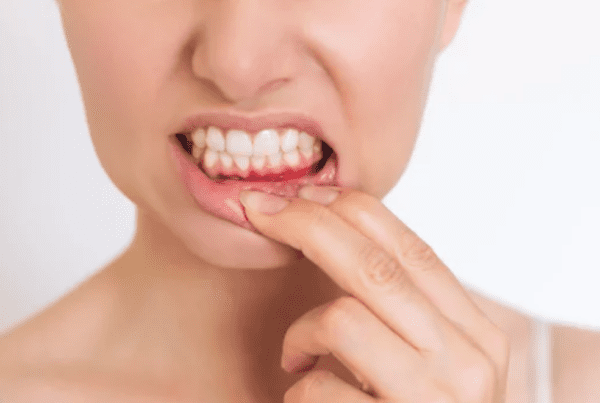Why Choose All-on-4 Dental Implants?
There are many types of dental implants in the market and All-on-4 is one of those available. You might have heard about it before and are curious to know what makes it different from the others. First, a dental implant is a small screw (usually made with titanium) that is inserted into your jawbone. This screw will serve as a replacement for the missing tooth and fill the gap in that space. A fake tooth will then be placed over the screw to restore the natural look of your teeth.
Restore your beautiful smile through dental implants.
All-on-4 dental implants basically mean using four implants on top of four missing teeth. In some cases, your dentist will attach a denture on those spots. The cost of this procedure will vary greatly based on a number of factors such as the number of fake teeth needed and the type of material used.
In general, there are two options on the type of denture used for All-on-4 implants. The first one is acrylic used within a titanium framework. This type of denture can cost anywhere from $20,000 to $30,000. You can also find porcelain dental implants if you want something more durable and realistic-looking. The cost can go up to $35,000.
The procedure can be done with local or general anesthesia. Your dentist will determine this prior to the actual procedure as they prepare your mouth for the implant. They will start by removing any remaining teeth that are failing and then get rid of any infected tissues. From there, the implantation process will begin and they will insert the screws to your jawbone. Once the implants are in place, they will clean the surgical site and seal any incision.
Are you in need of this type of procedure? Learn more about the benefits of All-on-4 dental implants.
Eating and Drinking Guidelines
After undergoing the procedure, there are many questions that might arise about the recovery process. Eating after All-on-4 implants is one of them. There are plenty of things that you need to know when it comes to the recovery process.
During the first hour following your surgery, gauze packs will be placed over the surgical site. It is recommended that you replace the gauze from time to time. Once at home, try not to disturb the tender areas surrounding your implants. When you brush, make sure you use a soft toothbrush and clean your teeth gently.
Over the past few days or weeks, you need to take the same kind of precaution when it comes to your diet. There are two time periods that you need to be aware of when it comes to eating after All-on-4 implants: the first two weeks and up to three months post-surgery.
The type of food you eat during the recovery period is also something you need to consider. By choosing the right type of food, you can help to reduce any pain or swelling. It can also help to speed up your recovery process so you can restore your routine back to normal. For individuals with pre-existing dietary requirements, make sure to speak with your dietitian about making any adjustments to your diet.
What to Eat
During the first two weeks following the procedure, you will be on a liquid diet. Your mouth, jaw, and throat will mostly be sore during this time. While the pain or swelling might have subsided at this point, eating can still prove to be difficult. A liquid diet will eliminate the need to chew so it eases the burden in your teeth, jaw, and mouth. During the first 48 hours after your surgery, you might be restricted to cool liquids only. You should also avoid any hot or spicy liquids.
Stick to cool liquids to let the implants set and heal quicker.
With that said, keeping yourself hydrated is important. Drink small amounts of fluid throughout the day. Keeping yourself hydrated is vital for optimal healing so you can recover faster. Proper nutrition is also important when you are consuming liquids alone. You might want to consume fluids that are packed with nutrients as proper nutrition is also vital for your fast recovery.
One more thing to note: avoid drinking fluids from a straw. While it might be tempting to do so, the sucking action will loosen any blood clots and cause more bleeding. When you bleed, it will delay the healing of the surgical site.
When it comes to eating after All-on-4 implants, below are the list of food items you may consume:
- Water
- Coconut water
- Protein shakes
- Meal replacement shakes
- Milk
- Broth
- Tea
- Fruit juices
- Coffee
- Smoothies
- Frozen yogurt
- Milkshakes
- Custard
- Ice cream
- Yogurt-based drinks
- Vegetable or cream soup
If you are making your own protein shakes or smoothies, it is important to keep the consistency very light. You want to avoid chunky smoothies because it will make it more difficult to sip them. The farther you are in the recovery process, the more you can tolerate heavier and chunkier shakes. But for the first few days or weeks, you will need them to be in a very light consistency.
During the second half of your recovery period (the two-week period onwards), you may switch to a soft food diet. During this time, the soreness will be gone and your jaw will be starting to heal. You can slowly introduce solid food back into your diet, but make sure to stick to soft food at this time. Avoid any food item that is hard, chewy, and crunchy. Choose food items that can be eaten with a spoon and will require minimal chewing.
At this point, you can consume the following food items:
- Mashed potatoes (or any other types of vegetables)
- Soft tofu
- Pureed stews
- Eggs
- Cheese
- Hummus
- Quinoa
- Polenta
- Oatmeal
- Soft bread
During the recovery process, make sure to use a food processor or blender to prepare your food. This will enable you to achieve the right consistency so you can facilitate the healing process. It is also important to keep proper nutrition in mind. Do not focus solely on the consistency of the food items you are trying to consume. Make sure they are healthy, too.







Recent Comments